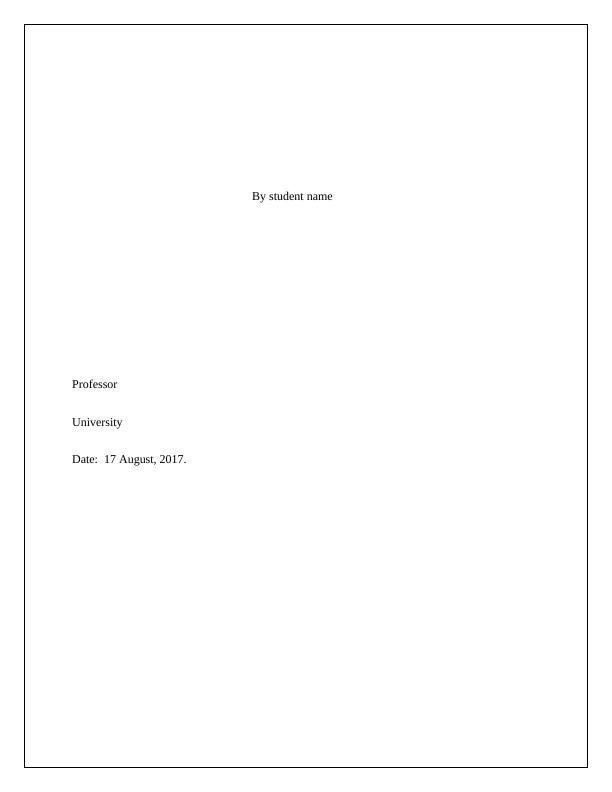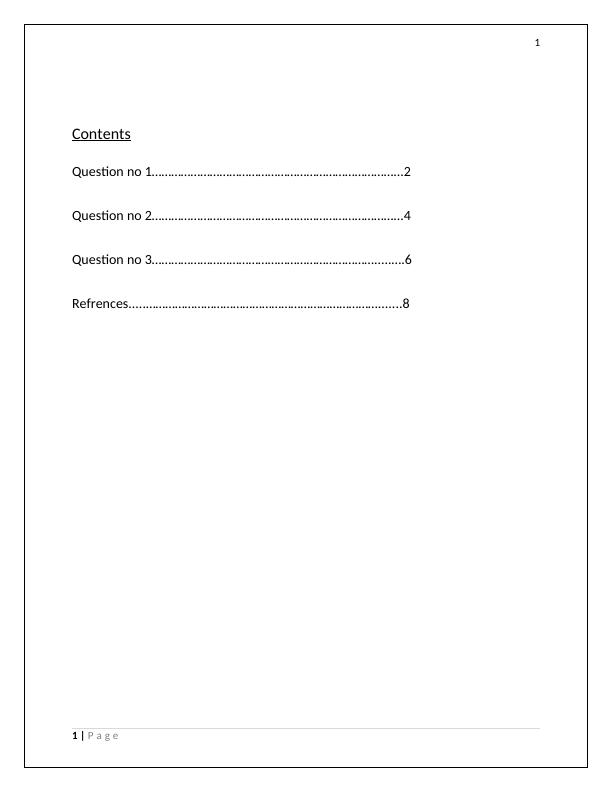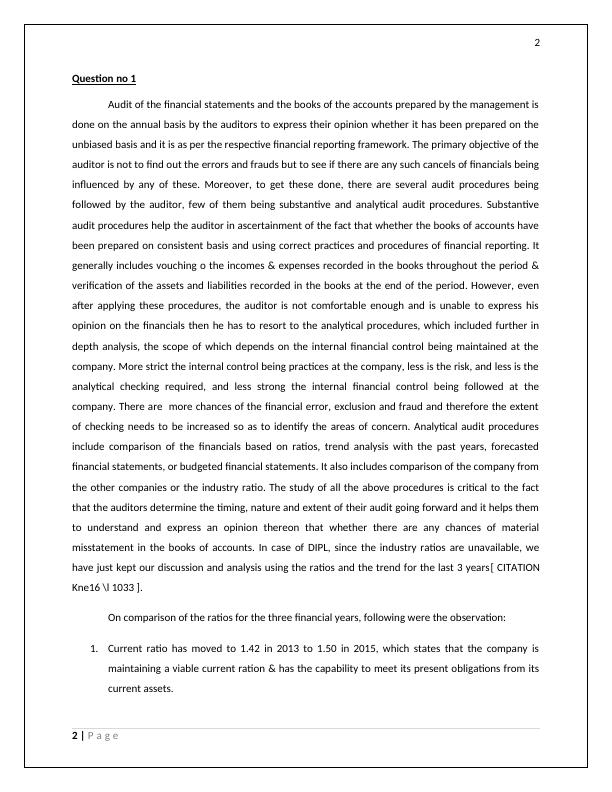HI6026, Audit, Assurance and Compliance | Assignment
Added on 2020-03-04
10 Pages2255 Words40 Views
By student name ProfessorUniversityDate: 17 August, 2017.

1ContentsQuestion no 1..............................................................................2Question no 2..............................................................................4Question no 3..............................................................................6Refrences....................................................................................81 | P a g e

2Question no 1Audit of the financial statements and the books of the accounts prepared by the management isdone on the annual basis by the auditors to express their opinion whether it has been prepared on theunbiased basis and it is as per the respective financial reporting framework. The primary objective of theauditor is not to find out the errors and frauds but to see if there are any such cancels of financials beinginfluenced by any of these. Moreover, to get these done, there are several audit procedures beingfollowed by the auditor, few of them being substantive and analytical audit procedures. Substantiveaudit procedures help the auditor in ascertainment of the fact that whether the books of accounts havebeen prepared on consistent basis and using correct practices and procedures of financial reporting. Itgenerally includes vouching o the incomes & expenses recorded in the books throughout the period &verification of the assets and liabilities recorded in the books at the end of the period. However, evenafter applying these procedures, the auditor is not comfortable enough and is unable to express hisopinion on the financials then he has to resort to the analytical procedures, which included further indepth analysis, the scope of which depends on the internal financial control being maintained at thecompany. More strict the internal control being practices at the company, less is the risk, and less is theanalytical checking required, and less strong the internal financial control being followed at thecompany. There are more chances of the financial error, exclusion and fraud and therefore the extentof checking needs to be increased so as to identify the areas of concern. Analytical audit proceduresinclude comparison of the financials based on ratios, trend analysis with the past years, forecastedfinancial statements, or budgeted financial statements. It also includes comparison of the company fromthe other companies or the industry ratio. The study of all the above procedures is critical to the factthat the auditors determine the timing, nature and extent of their audit going forward and it helps themto understand and express an opinion thereon that whether there are any chances of materialmisstatement in the books of accounts. In case of DIPL, since the industry ratios are unavailable, wehave just kept our discussion and analysis using the ratios and the trend for the last 3 years[ CITATIONKne16 \l 1033 ].On comparison of the ratios for the three financial years, following were the observation:1.Current ratio has moved to 1.42 in 2013 to 1.50 in 2015, which states that the company ismaintaining a viable current ration & has the capability to meet its present obligations from itscurrent assets.2 | P a g e

End of preview
Want to access all the pages? Upload your documents or become a member.
Related Documents
HI6026 - Audit, Assurance and Compliance | Reportlg...
|12
|2249
|88
Audit Processes in Business and Financelg...
|11
|1950
|376
Auditing assurance and compliance - HI6026lg...
|8
|1161
|38
HI6026| The Audit, Assurance and Compliancelg...
|10
|2217
|43
HI6026 - Aspects and Methods of Auditing - Assignmentlg...
|9
|2047
|65
LUBS3550 - Introduction To Audit | Assignmentlg...
|10
|2392
|109
